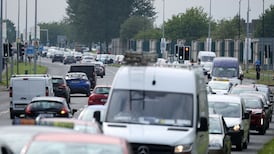You wait ages for a plan to expand out railways – then two come along in one week. What gives?
On Tuesday, it was announced that plans to expand the Dart service to 600,000 people – trebling the current network – are going ahead after planning authorities granted permission to extend the service to Maynooth, Co Kildare. The project – officially called Dart+ West – will double train services along the Maynooth line. It is the first phase of Irish Rail’s plans for an expansion of Dart services that also include the electrification of the rail line to Drogheda, Co Louth; Celbridge, Co Kildare; and a significant upgrade in capacity to Greystones, Co Wicklow.
And there was another report out this week?
Yes, the final report of the All-Island Strategic Rail Review was published on Wednesday. The report envisages delivering intercity trains at speeds of up to 200km/h, more frequent trains, new services in the northwest, and the electrification of the intercity network. Minister for Transport Eamon Ryan hailed it as “the most ambitious vision for rail in a century”.
I’d settle for trains that arrive on time. When can we expect progress?
The Maynooth Dart, first announced almost 20 years ago, is expected to start running on the line by the end of the decade, according to Irish Rail. Other elements will take longer. The All-Island Strategic Rail Review, meanwhile, sets out ambitions for investment in rail services up to 2050. The Government maintains progress is already happening with an hourly train service between Dublin and Belfast due soon and additional services between Dublin and Galway. However, Irish transport plans have a long history of getting, well, derailed. So, you may be waiting on the platform for a while until you see bigger changes.
I presume this isn’t cheap?
The Dart+ West project has a €1 billion price tag. This would double train services along the Maynooth line, increasing hourly passenger capacity from 5,000 to more than 13,000 each way, as well as expanding the rail line and capacity elsewhere. The all-island review, meanwhile, estimates that full plan over the next 26 years would cost €35 billion to €37 billion at last year’s prices, with the costs to be shared by the two jurisdictions. That would amount to an average annual spend of some €1 billion in the State and £310 million (€368 million) in Northern Ireland.
READ MORE
So, yes, not cheap.
Where does all this leave our love affair with the car?
The Government says the goal is to ensure that taking the train will be faster than a car journey, as well as providing a net carbon zero rail system, primarily through the overhead electrification of intercity routes and new electric trains.












